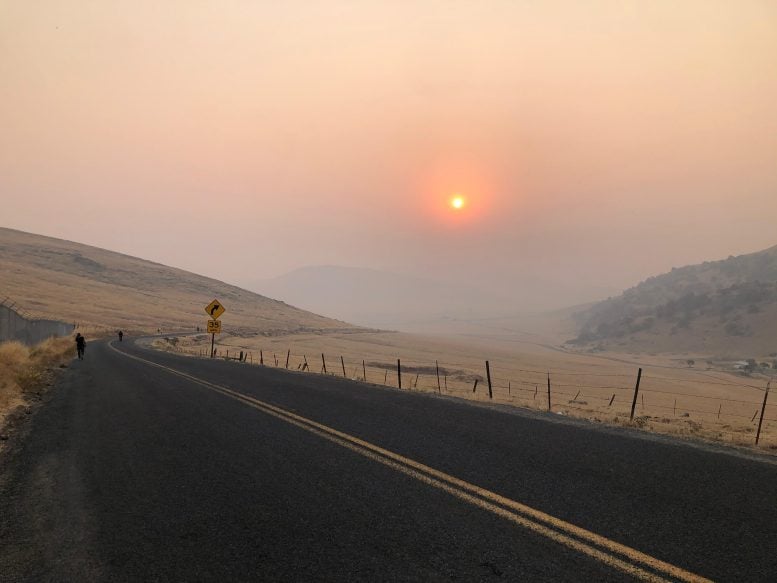
Wildfire emissions polluting the view in 2020. Credit: Frausto-Vicencio/UCR
Advancement in pollution detection methods raises questions about current environmental policies.
UC Riverside scientists have discovered a massive amount of methane, a highly potent greenhouse gas, being released from wildfires using a novel detection method. This raises concerns as this source of methane emission is not being monitored by state air quality authorities.
According to the researchers, methane has a warming effect on the planet that is 86 times greater than carbon dioxide over a 20-year period. Without considering this source of emissions, it will be challenging for the state to achieve its cleaner air and climate goals.
Wildfires emitting methane is not new. But the amount of methane from the top 20 fires in 2020 was more than seven times the average from wildfires in the previous 19 years, according to the new UCR study.
“Fires are getting bigger and more intense, and correspondingly, more emissions are coming from them,” said UCR environmental sciences professor and study co-author Francesca Hopkins. “The fires in 2020 emitted what would have been 14 percent of the state’s methane budget if it was being tracked.”
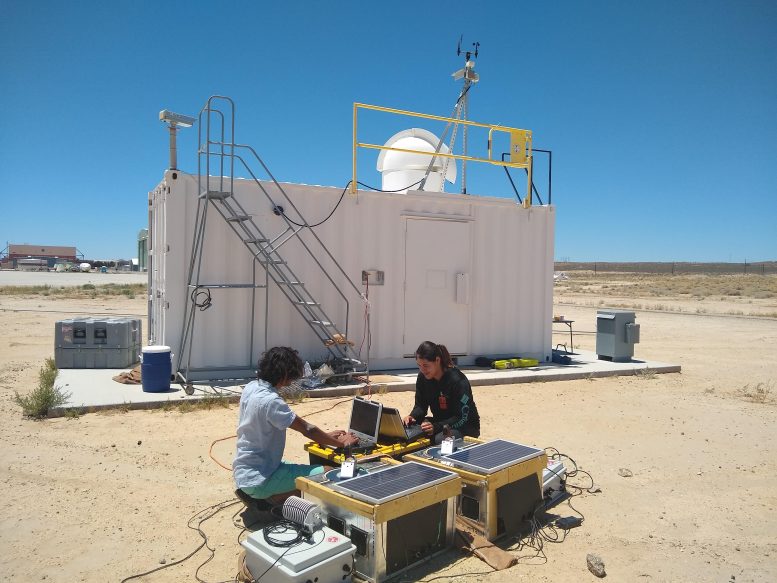
Researchers from UC Riverside and Los Alamos National Laboratory measuring wildfire emissions from a safe distance. Credit: Frausto-Vicencio/UCR
The state does not track natural sources of methane, like those that come from wildfires. But for 2020, wildfires would have been the third biggest source of methane in the state.
“Typically, these sources have been hard to measure, and it’s questionable whether they’re under our control. But we have to try,” Hopkins said. “They’re offsetting what we’re trying to reduce.”
Traditionally, scientists measure emissions by analyzing wildfire air samples obtained via aircraft. This older method is costly and complicated to deploy. To measure emissions from 2020’s Sequoia Lightning Fire Complex in the Sierra Nevadas, the UCR research team used a remote sensing technique, which is both safer for scientists and likely more accurate since it captures an integrated plume from the fire that includes different burning phases.
The technique, detailed in the journal Atmospheric Chemistry and Physics, allowed the lead author, UCR environmental sciences Ph.D. student Isis Frausto-Vicencio to safely measure an entire plume of the Sequoia Lightning Fire Complex gas and debris from 40 miles away.
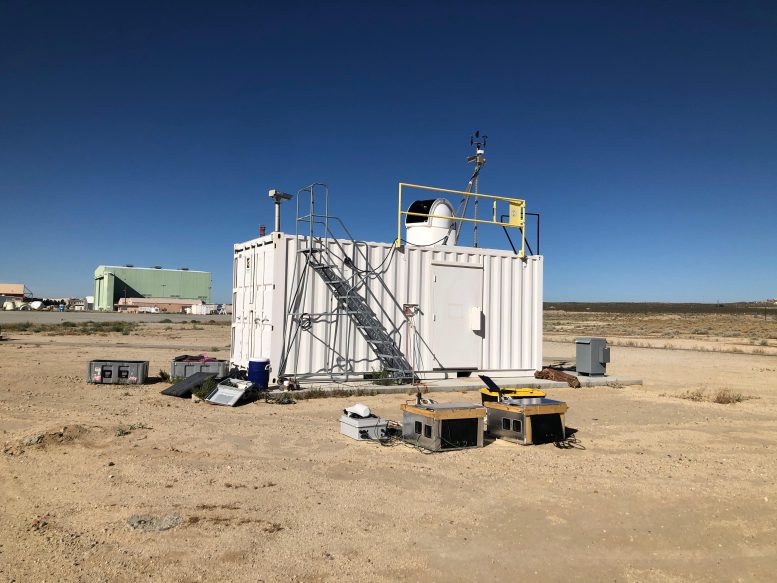
Portable solar spectrometers measuring alongside a higher resolution solar spectrometer. Researchers performed side-by-side measurements before and after field campaigns to ensure instrument stability and check data quality. Photo taken at NASA’s Armstrong Flight Research Center in Edwards, California. Credit: Frausto-Vicencio/UCR
“The plume, or atmospheric column, is like a mixed signal of the whole fire, capturing the active as well as the smoldering phases,” Hopkins said. “That makes these measurements unique.”
Rather than using a laser, as some instruments do, this technique uses the sun as a light source. Gases in the plume absorb and then emit the sun’s heat energy, allowing insight into the quantity of aerosols as well as carbon and methane that are present.
Using the remote technique, the researchers found nearly 20 gigagrams of methane emitted by the Sequoia Lightning Fire Complex. One gigagram is 1,000 metric tons. An elephant weighs around one metric ton. For context, the fire, therefore, contained roughly 20,000 elephants’ worth of the gas.
This data matches measurements that came from European space agency satellite data, which took a more sweeping, global view of the burned areas, but are not yet capable of measuring methane in these conditions.
If included in the California Air Resources Board methane budget, wildfires would be a bigger source than residential and commercial buildings, power generation, or transportation, but behind agriculture and industry. While 2020 was exceptional in terms of methane emissions, scientists expect more megafire years going forward with climate change.
In 2015, the state first established a target of a 40 percent reduction in methane, refrigerants, and other air pollutants contributing to global warming by 2030. The following year, in 2016, Gov. Jerry Brown signed SB 1383, codifying those reduction targets into law.
The reductions are meant to come from regulations that capture methane produced from manure on dairy farms, eliminate food waste in landfills, require oil and gas producers to minimize leaks, ban certain gases in new refrigerators and air conditioners, and other measures.
“California has been way ahead on this issue,” Hopkins said. ‘We’re really hoping the state can limit the methane emissions under our control to reduce short-term global warming and its worst effects, despite the extra emissions coming from these fires.”
Reference: “Ground solar absorption observations of total column CO, CO2, CH4, and aerosol optical depth from California’s Sequoia Lightning Complex Fire: emission factors and modified combustion efficiency at regional scales” by Isis Frausto-Vicencio, Sajjan Heerah, Aaron G. Meyer, Harrison A. Parker, Manvendra Dubey and Francesca M. Hopkins, 14 April 2023, Atmospheric Chemistry and Physics.
DOI: 10.5194/acp-23-4521-2023


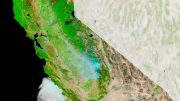

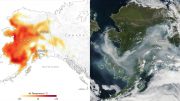

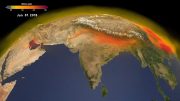


Interesting. I had no idea a fire would release methane, since it’s highly flammable, and I’m no chemist, but maybe it’s released at too low a concentration to fully combust. I suppose the data would then support setting small manageable fires regularly, to reduce the temperature, if high temperatures do create more methane emissions. Of course, that’s just releasing methane and carbon unnecessarily, so ideally the trees would be cut down every few decades and allowed to regrow, locking much more carbon (and methane) into wood products. Forestry management for the win.
Oh, and the sky is always that smog haze brown over University California Riverside.
“According to the researchers, methane has a warming effect on the planet that is 86 times greater than carbon dioxide over a 20-year period.”
The signatories of the Montreal Protocol have agreed that because we are concerned about the long-term effects, the appropriate measure of the Global Warming Potential of Green House Gases is 100 years. However, what is rarely mentioned is that the CO2 equivalence is for EQUAL WEIGHTS. When converted to parts per million mole fraction (the measurement units reported for atmospheric CO2), the equivalence reduces from about 32X (over 100 yrs) to less than 12X.
For a more detailed explanation, see: https://wattsupwiththat.com/2023/03/06/the-misguided-crusade-to-reduce-anthropogenic-methane-emissions/
“The state does not track natural sources of methane, like those that come from wildfires.”
However, there are several monitoring stations throughout the world, notably Mauna Loa Observatory, on roughly the same latitude as California. The methane increase in 2020 was not anomalous compared to other recent years. I make the case [above link] that even if every nation in the world were to abide by the Global Methane Pledge and achieve the goal of reducing fossil fuel emissions by 30% compared to 2020, it would only amount to an equivalent 0.6% decrease in CO2.
“…, the researchers found nearly 20 gigagrams of methane emitted by the Sequoia Lightning Fire Complex. One gigagram is 1,000 metric tons.” [or, 20,000 tons]
The fire is claimed to have emitted about 20 Kilotons (Kt) of methane, compared to about 35 Gt of emissions from fossil fuels. That is, the emission was 6 orders of magnitude (one million times) smaller than the major anthropogenic emissions. Once again, the authors are throwing around big numbers that are meaningless out of context. The number of ‘Dumbos,’ flying or otherwise, is not an accepted unit of measurement in science.